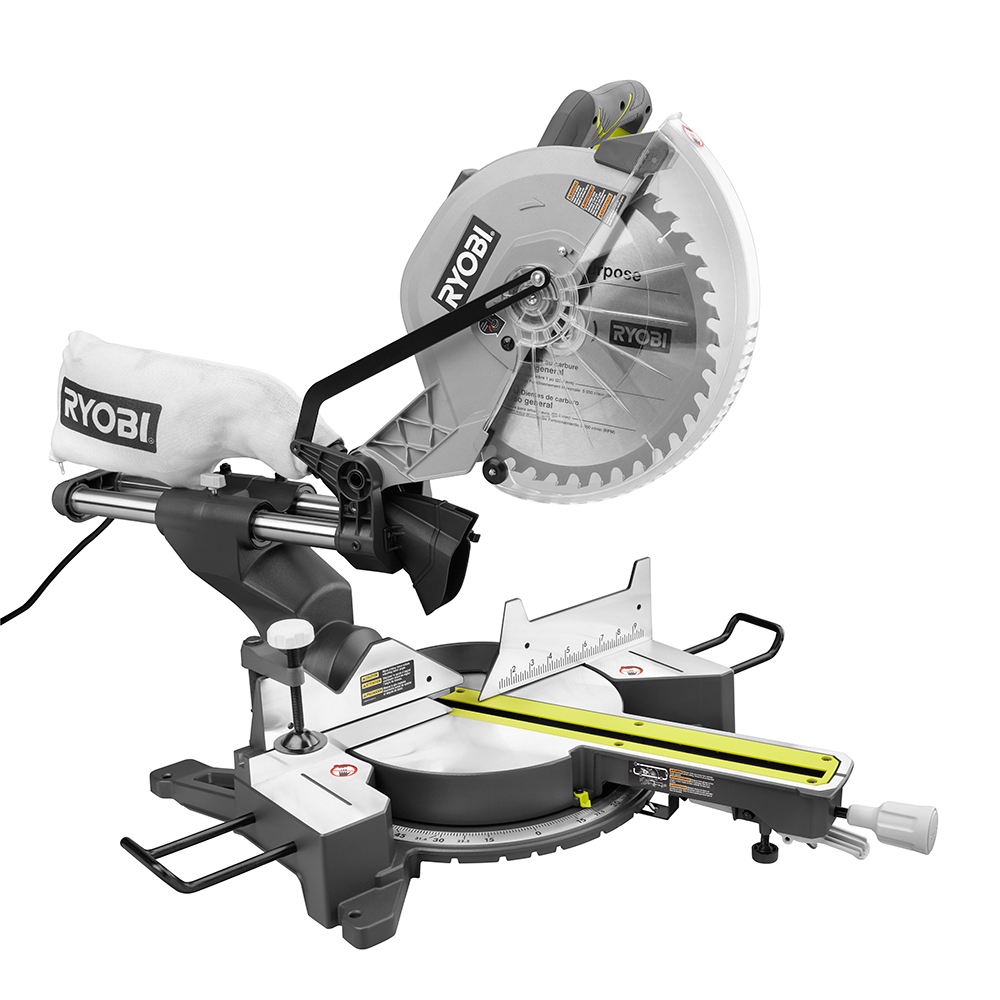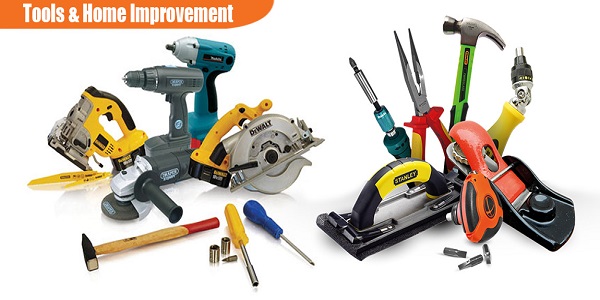A miter saw typically uses between 1200 and 1800 watts. This power range depends on the model and its features.
Understanding wattage helps you choose the right saw for your projects. Miter saws are essential tools for woodworking enthusiasts and professionals. They cut wood at precise angles, making them perfect for trim work, molding, and framing. Knowing the wattage of a miter saw is important.
It affects efficiency and performance. Higher wattage usually means more power. This leads to faster cuts and smoother operations. But it also means higher energy consumption. Balancing power and efficiency is key. It ensures you get the best results without wasting energy. This blog will help you understand miter saw wattage. You’ll learn how it impacts your work and energy use.
Miter Saw Basics
Understanding the basics of a miter saw is essential for any DIY enthusiast or professional woodworker. This versatile tool helps make precise angled cuts. It is a must-have for crafting perfect corners and frames.
Types Of Miter Saws
Miter saws come in different types, each serving specific needs. The standard miter saw is the most basic. It makes straight cuts at various angles. Compound miter saws add tilt capabilities, allowing beveled cuts. Sliding compound miter saws have a sliding arm feature. They handle wider materials with ease. Dual compound miter saws tilt in both directions. This makes complex cuts simpler and faster.
Common Uses
These saws are perfect for cutting wood trim. They are also used for molding and framing. Picture frames benefit from precise cuts. Miter saws handle crown molding efficiently. They create smooth, clean edges. Users can cut window casings and door frames neatly. They are also useful for crafting furniture pieces.

Credit: espanol.ryobitools.com
Power Consumption Factors
Understanding the power needs of a miter saw helps manage energy use effectively. Typically, a miter saw uses between 1200 and 1800 watts. Factors like motor size and cutting speed can affect the overall power consumption.
Understanding the power consumption of your miter saw can help you make informed decisions and optimize energy use. Several factors impact how much electricity your saw consumes. Let’s explore these factors to better understand what affects your tool’s power usage.Motor Size
The motor size is a primary factor influencing power consumption. Larger motors generally require more watts to operate. A 10-amp motor may consume less power than a 15-amp motor, which translates to different electricity costs. If you’re cutting thick or dense materials frequently, a larger motor might be necessary. But if you’re doing light work, a smaller motor can save energy and money. Always match the motor size to your typical project needs.Blade Diameter
The blade diameter plays a surprising role in power consumption. Larger blades need more power to spin, increasing the wattage your saw uses. If you have a 12-inch blade, expect it to use more electricity compared to a 10-inch blade. Consider the types of cuts you frequently make. Larger blades offer wider cuts, which might be overkill for small, intricate projects. Choosing the right blade size can help you balance power use and cutting needs. Have you considered how these factors align with your workshop’s energy efficiency goals? Understanding these elements can lead to smarter tool purchases and reduce your energy bills over time.Typical Wattage Range
The typical wattage range of a miter saw is crucial for understanding its power and efficiency. Knowing the wattage can help you decide which saw best suits your needs. Whether you’re tackling DIY projects or professional carpentry, grasping this concept is essential.
Corded Miter Saws
Corded miter saws usually range from 1200 to 1800 watts. This range offers consistent power that doesn’t wane as you work. If you’re cutting through tough materials, these saws can be a reliable choice.
Imagine working on a complex woodworking project with hardwood—cordless saws might struggle here. But with corded options, you’ll experience steady power, ensuring clean, precise cuts.
Have you ever felt frustrated when your tool loses power mid-cut? Corded miter saws eliminate this hassle, making them a favorite among professionals who demand reliability.
Cordless Options
Cordless miter saws generally use between 400 to 800 watts, depending on the battery and model. These saws are perfect for portability and convenience, especially for quick jobs or when outlets are scarce.
Imagine being free to move around your workspace without the constraints of cords. With cordless options, you can work in areas without electricity or easily switch locations.
However, think about the trade-off—while cordless saws offer freedom, they might not provide the relentless power needed for heavy-duty tasks. Are you willing to sacrifice some power for mobility?
Understanding the wattage range helps you make informed decisions. Are you looking for power or portability, or perhaps a balance of both? Knowing what to expect from your miter saw can save you time and frustration in your projects.

Credit: www.amazon.com
Comparing Brands And Models
When choosing a miter saw, wattage is an essential factor to consider. Understanding the power consumption of different brands and models can help you make an informed decision. You might wonder why wattage matters. It affects the saw’s performance and efficiency, influencing how well it cuts through various materials.
Popular Brand Analysis
Popular brands such as DeWalt, Bosch, and Makita dominate the miter saw market. Each brand offers unique features, and their saws come with varying wattages.
DeWalt miter saws are known for their robust construction and reliability. They often use around 1400 to 1800 watts, providing powerful cutting capabilities.
Bosch models typically run on 1200 to 1600 watts. This range is enough for most DIY projects, balancing power with energy efficiency.
Makita saws are versatile and compact, usually consuming between 1000 to 1400 watts. They are ideal for smaller tasks and hobbyists looking for precision.
Have you tried any of these brands? Think about how the wattage affected your cutting experience.
Model-specific Wattage
Different models within these brands offer varying wattage. This can significantly impact the tool’s performance.
Take the DeWalt DWS780, for instance. It uses about 1675 watts, making it a powerhouse for heavy-duty tasks.
The Bosch GCM12SD, on the other hand, operates at around 1600 watts. It’s perfect for those who need a strong and reliable saw without excessive power consumption.
Makita’s LS1018 runs at approximately 1430 watts, providing a balance between power and portability. It’s great for both professional and home use.
Are you considering a specific model? Compare its wattage to your project’s requirements to ensure efficiency and effectiveness.
Choosing the right miter saw involves more than just price or brand loyalty. It requires attention to detail, especially wattage.
Next time you’re in the market for a miter saw, will you make wattage a priority?
Energy Efficiency Tips
A miter saw usually uses between 1200 to 1800 watts. Checking the wattage helps manage energy costs. Opt for energy-efficient models to reduce power consumption.
When using a miter saw, energy efficiency might not be the first thing on your mind. However, understanding how to save energy can not only lower your electricity bill but also extend the life of your saw. Let’s explore some practical energy efficiency tips that you can implement easily.Efficient Cutting Techniques
You can use efficient cutting techniques to maximize your miter saw’s energy use. Begin by planning your cuts to minimize waste. Doing this reduces the number of cuts you need to make, which saves energy. Ensure you position the material correctly before cutting. This reduces the chance of mistakes that lead to additional cuts. Try practicing on scrap pieces to refine your technique, ensuring you get it right the first time. Are you using the right blade for the material you’re cutting? The correct blade reduces resistance and allows the saw to cut more smoothly, using less power. Check your blade’s condition regularly, as a sharp blade is more energy-efficient than a dull one.Maintenance For Energy Saving
Regular maintenance can significantly impact your miter saw’s energy consumption. Clean your saw regularly to remove dust and debris. Accumulated dirt can cause the motor to work harder, using more energy. Lubricate moving parts to keep everything running smoothly. Friction not only wears out components faster but also forces your saw to use more power. Spending a few minutes on maintenance can save you a lot in energy costs over time. Check your saw’s electrical connections. Loose or corroded connections can lead to inefficient power use. Ensuring everything is tight and in good condition will help your saw operate efficiently. How often do you maintain your tools? Setting a routine for checking and maintaining your miter saw can lead to long-term energy savings. It’s a simple yet effective strategy that pays off.Impact On Electricity Bill
Using a miter saw can increase your electricity bill. It’s important to understand how this happens. Miter saws use electricity to power their motors. This usage adds to your home’s total energy consumption. Being aware of the watts used by your saw can help manage costs.
Calculating Energy Costs
To calculate energy costs, first find out your miter saw’s wattage. Check the label on the tool or the user manual. Most miter saws use between 800 and 2,400 watts. Multiply the saw’s wattage by the number of hours used. Divide by 1,000 to convert to kilowatt-hours (kWh). Then, multiply by your electricity rate per kWh. This gives you the cost of running the saw.
Reducing Usage Costs
Reduce usage costs by limiting the time the miter saw is on. Turn off the saw when not in use. Consider using a more efficient model. Some newer saws use less power while providing the same performance. Also, try to complete tasks in one session to avoid multiple starts.
Alternatives To High-wattage Tools
Choosing the right tool for your woodworking projects is vital. High-wattage miter saws might not always be the best choice. They consume more power and can be less efficient. Fortunately, there are alternatives that offer functionality without high energy costs. These options cater to different needs, whether you prefer manual labor or electric efficiency.
Manual Saw Options
Manual saws are a great alternative. They require no electricity and are easy to handle. Hand saws are perfect for small tasks and quick cuts. They offer precise control over your work. Bow saws are also excellent for cutting curves. They are lightweight and simple to use. Manual saws are ideal for those who enjoy traditional woodworking. They provide a hands-on experience with every cut.
Low-power Electric Tools
Electric tools with low wattage are efficient. They use less energy and can handle many tasks. Compact circular saws are a good choice. They are portable and suitable for light jobs. Jigsaws are versatile and cut various materials with ease. They offer a balance between power and efficiency. Low-power electric tools can save energy and reduce costs. They ensure your projects are completed smoothly and effectively.

Credit: www.toolnation.com
Future Trends In Miter Saw Technology
The future of miter saw technology is evolving rapidly. New trends focus on efficiency and design. These innovations aim to enhance user experience and energy savings.
Advancements In Energy Efficiency
Manufacturers are developing miter saws that use fewer watts. This helps reduce electricity costs and environmental impact. Energy-efficient motors are becoming more common. They offer the same power with less energy use.
Battery technology is also improving. New batteries charge faster and last longer. Users enjoy more portability and convenience without sacrificing power.
Innovations In Design
Design changes are making miter saws easier to use. Lightweight materials reduce overall weight. This makes them more portable and user-friendly.
Ergonomic handles and controls improve comfort during long projects. Users experience less fatigue and greater precision. Smart features like digital displays and laser guides are gaining popularity. They help users make accurate cuts with ease.
Frequently Asked Questions
How Many Watts Do You Need To Run A Miter Saw?
A miter saw typically requires 1,200 to 1,800 watts to operate. The exact wattage depends on the model and size. Check the manufacturer’s specifications for precise wattage requirements. Ensure your power source can handle the saw’s wattage to avoid electrical issues.
How Big Of A Generator Do I Need To Run A Miter Saw?
A miter saw typically requires a generator with at least 1500 watts. Check your saw’s power requirements for accuracy. Ensure the generator’s wattage exceeds the saw’s startup and running watts to avoid overload. Consider additional tools for a larger generator.
Will A 3500 Watt Generator Run A Table Saw?
Yes, a 3500-watt generator can run a table saw. Most table saws need around 2000 watts to start and 1000 watts to run. Check your table saw’s specifications to ensure compatibility. It’s always good to have a generator with a higher wattage to handle potential power surges.
Will A 2000 Watt Generator Run A Skill Saw?
Yes, a 2000-watt generator can run a skill saw. Most skill saws require between 1200 and 1800 watts. Ensure the generator supports the starting wattage surge. Check the saw’s specifications for accurate power needs to avoid overloading the generator. Always prioritize safety and proper usage guidelines.
Conclusion
Understanding the wattage of a miter saw helps in planning your projects. Most miter saws use between 1200 and 1800 watts. This range depends on the model and brand. Knowing the wattage can help you manage power usage. It’s important for safety and efficiency.
Check your saw’s manual for exact details. Always choose a saw that fits your power needs. This ensures smooth operation and longer tool life. Keep these points in mind for a better woodworking experience. Happy cutting!


